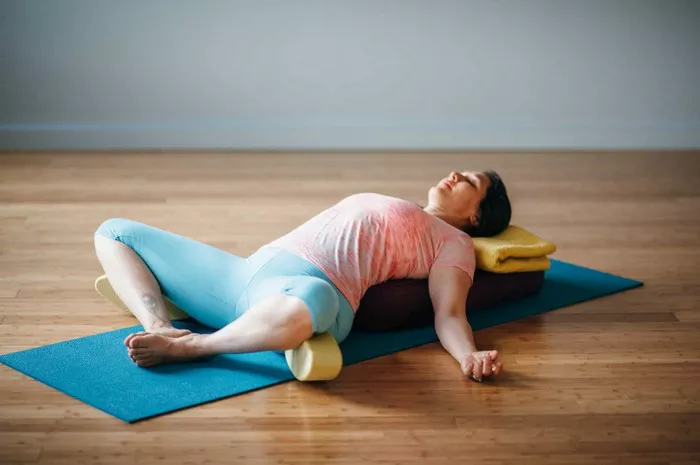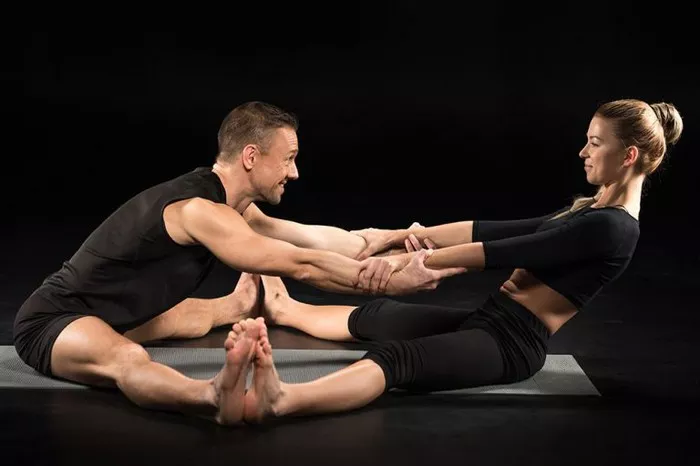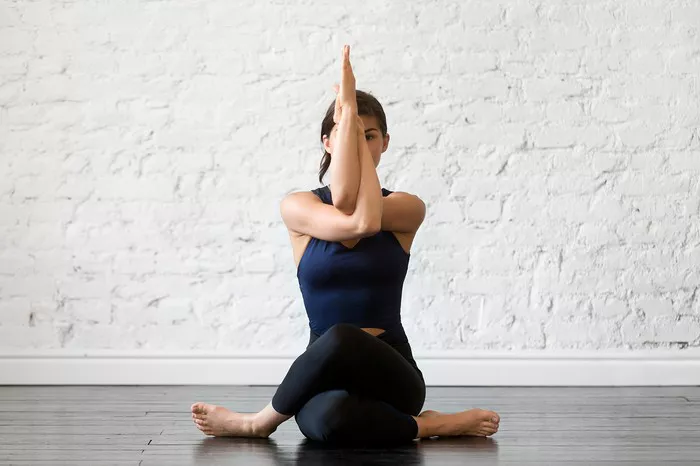Yoga is a vast and profound discipline that has evolved over thousands of years, with various schools and methods developed to guide practitioners on their journey toward self-awareness, balance, and well-being. Among the many styles of yoga, Iyengar Yoga stands out for its emphasis on precision, alignment, and the use of props to support the body. This style, founded by B.K.S. Iyengar, incorporates a deep understanding of the traditional yogic principles and applies them in a methodical and practical way to make yoga accessible and effective for everyone, regardless of age, ability, or experience.
At the core of Iyengar Yoga lies the understanding of the Eight Limbs of Yoga, as outlined by the sage Patanjali in his ancient text, the Yoga Sutras. These eight limbs offer a systematic approach to living a healthy, mindful, and spiritually fulfilled life. While Iyengar Yoga places particular emphasis on physical alignment and posture, it also integrates the deeper aspects of yoga to help students cultivate not only strength, flexibility, and balance in their bodies but also mental clarity, emotional stability, and spiritual growth.
In this article, we will explore each of the eight limbs of yoga and how they are applied within the context of Iyengar Yoga. Understanding these limbs can help you cultivate a more holistic yoga practice, promoting physical well-being and psychological peace.
The Eight Limbs of Yoga
The Eight Limbs of Yoga, known as Ashtanga Yoga, are outlined in Patanjali’s Yoga Sutras. The word Ashtanga itself means “eight limbs” in Sanskrit, and each of these limbs represents a different aspect of yoga practice, ranging from ethical guidelines to mental disciplines to physical postures. While these limbs are often practiced in sequential order, they are interconnected and support one another in a comprehensive approach to yoga.
1. Yama – Ethical Restraints
The first limb of yoga, Yama, refers to the ethical principles or moral codes that govern our behavior toward others and the world around us. These guidelines encourage the practitioner to live a life of integrity, compassion, and respect. There are five Yamas:
- Ahimsa (non-violence): This is the foundational principle of kindness and compassion. Ahimsa encourages practitioners to avoid causing harm through actions, speech, or thought.
- Satya (truthfulness): Satya emphasizes the importance of honesty and authenticity in all aspects of life.
- Asteya (non-stealing): Asteya calls for the practice of not taking what does not belong to us, whether it is material possessions or even intangible things like attention or credit.
- Brahmacharya (moderation or celibacy): In the context of Iyengar Yoga, Brahmacharya refers to the practice of using one’s energy mindfully, avoiding indulgence or excess, and directing energy toward higher spiritual pursuits.
- Aparigraha (non-possessiveness): Aparigraha teaches detachment and the importance of avoiding greed, hoarding, or attachment to material objects.
In Iyengar Yoga, Yamas are incorporated not only as ethical guidelines for how we treat others but also as a framework for how we interact with our own bodies and minds. For example, practicing Ahimsa in yoga involves being gentle and kind to your body, avoiding pushing it beyond its natural limits, and fostering a positive mindset toward yourself.
2. Niyama – Observances
The second limb, Niyama, refers to personal practices that help foster self-discipline, cleanliness, and inner peace. These observances encourage the practitioner to cultivate purity and mindfulness both physically and mentally. There are five Niyamas:
- Saucha (cleanliness): Saucha promotes purity of body and mind, encouraging cleanliness in one’s environment and habits, as well as mental clarity.
- Santosha (contentment): Santosha encourages the cultivation of contentment and acceptance of what is. It teaches practitioners to be at peace with what they have and to embrace the present moment without constant desire for more.
- Tapas (discipline or austerity): Tapas is the practice of self-discipline, perseverance, and dedication to one’s goals. It involves commitment to a steady practice, even when challenges arise.
- Svadhyaya (self-study): Svadhyaya encourages self-reflection and study, both of sacred texts and of one’s own mind. It invites practitioners to delve into the deeper questions of existence and to continually seek self-improvement.
- Ishvara Pranidhana (surrender to a higher power): This principle involves dedicating one’s actions to a higher purpose or divine presence, fostering humility and trust in the flow of life.
In Iyengar Yoga, Niyama is reflected in the discipline of practice itself. The use of props, for instance, promotes both physical alignment and an opportunity to mindfully examine one’s own limitations and tendencies. Practicing Niyama can help students develop greater awareness of their bodies and minds while maintaining a positive and patient attitude in their practice.
3. Asana – Physical Posture
Asana is the third limb and refers to the physical postures or poses practiced in yoga. Asanas are designed to purify and strengthen the body, improve flexibility, and prepare the practitioner for meditation by promoting physical stillness and comfort.
In Iyengar Yoga, asanas are taught with a particular emphasis on alignment. Precise alignment in each pose is seen as the key to preventing injury and ensuring that the physical postures lead to optimal health benefits. Iyengar Yoga often utilizes props such as blocks, belts, and cushions to help students achieve the correct alignment in poses, making the practice accessible to people of all abilities and body types.
Unlike some other yoga styles, Iyengar Yoga holds poses for longer periods of time, which helps practitioners develop greater strength, stability, and concentration. The focus on alignment and attention to detail in each pose also promotes mental clarity and discipline.
4. Pranayama – Breath Control
Pranayama, the fourth limb, refers to the control of breath, and is considered a key element in linking the body and the mind. The word prana means life force or energy, and ayama means extension or control. Together, pranayama is the practice of controlling the flow of prana through conscious breathing techniques.
In Iyengar Yoga, pranayama is taught alongside asanas to deepen the practice. By consciously controlling the breath, practitioners can calm the nervous system, enhance concentration, and bring greater awareness to the body. Pranayama practices include techniques such as alternate nostril breathing (Nadi Shodhana) and Ujjayi breath, both of which are commonly used in Iyengar Yoga to increase focus, reduce stress, and promote relaxation.
The breath is seen as a tool for enhancing the practice of each asana and for facilitating a meditative state. The connection between breath and movement helps to bring a sense of harmony to the practice, improving the overall experience.
5. Pratyahara – Withdrawal of the Senses
Pratyahara is the fifth limb and refers to the process of turning inward and withdrawing the senses from the external world. In modern terms, it can be understood as the practice of reducing distractions and creating space for inner focus and concentration. It is through Pratyahara that the practitioner learns to detach from the constant stimuli of the external world and to draw attention to the inner workings of the mind and body.
In Iyengar Yoga, Pratyahara is often experienced naturally during the practice, particularly when holding poses for extended periods. As practitioners focus on the alignment, breath, and sensations in their bodies, they often find that they become less distracted by the outside world. The use of props can also help facilitate this sense of inward focus by providing support and allowing the practitioner to concentrate on the subtle aspects of their practice.
6. Dharana – Concentration
Dharana, the sixth limb, refers to concentration, or the ability to focus the mind on a single point or object. It is the practice of cultivating unwavering attention and mental discipline. Dharana allows the practitioner to overcome distractions and develop the ability to remain focused on the present moment.
In Iyengar Yoga, concentration is integrated into each pose. The precise alignment required in each asana and the conscious awareness of breath help to foster concentration and mindfulness. As practitioners work through their practice, they are encouraged to focus on specific points of attention, such as the alignment of the body, the breath, or the sensations in the body.
This concentration helps create a deeper connection with the present moment and serves as a foundation for the next two limbs: meditation (Dhyana) and liberation (Samadhi).
7. Dhyana – Meditation
Dhyana, the seventh limb, is meditation, or the continuous flow of concentration. It is the practice of maintaining a focused, undistracted awareness on a particular object, thought, or sensation, leading to a state of deep inner peace and self-awareness. Dhyana goes beyond mere concentration, cultivating a state of flow where the mind becomes still and free from distractions.
In Iyengar Yoga, Dhyana is often experienced at the end of the physical practice when the body is calm, and the mind is more receptive to meditation. Practitioners may sit in a seated position or lie down in a restorative pose, allowing the mind to rest and find stillness.
8. Samadhi – Union or Enlightenment
The final limb, Samadhi, is the state of bliss or enlightenment. It represents the culmination of the yoga journey, where the practitioner experiences a deep sense of unity with the self, the world, and the divine. In this state, there is no sense of separation, and the individual experiences pure consciousness or transcendence.
In Iyengar Yoga, Samadhi may not be the focus of each practice, but through the cultivation of all the preceding limbs, the practitioner moves closer to this state of deep inner peace and enlightenment. As practitioners refine their asanas, breath, and concentration, they begin to touch moments of profound stillness and connection to their true nature.
Conclusion
The Eight Limbs of Yoga offer a comprehensive and transformative framework for the practice of Iyengar Yoga. They guide practitioners not only in achieving physical health and flexibility but also in cultivating mental clarity, emotional stability, and spiritual growth. By integrating the ethical principles of Yama and Niyama, the physical practices of Asana and Pranayama, and the mental disciplines of Pratyahara, Dharana, Dhyana, and Samadhi, Iyengar Yoga offers a holistic path toward self-realization.
As you embark on your Iyengar Yoga journey, keep in mind that the Eight Limbs are not linear steps but interwoven practices that support one another. By developing awareness, patience, and discipline, you can experience the profound benefits that yoga offers, not just on the mat, but in every aspect of your life.
Related Topics:

















